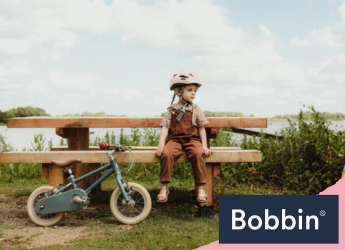What Age Should Toddlers Learn to Pedal?
Learning to ride a kid’s bicycle can be an exciting adventure for both children and parents. But at what age can your future rider start pedalling, and how can you show your support? This guide covers the factors that will help you determine if your child is ready and how to boost their confidence. Keep reading to find out more!
Top Skills Needed for Mastering Pedalling
Successful bike riding requires a combination of physical and cognitive abilities, including:
- Balance is important to maintain equilibrium while riding a bike. Acquiring this skill means your child can achieve stability and prevent falls.
- Your child must also know how to coordinate their leg movements to pedal in sync. This involves bilateral coordination, where both sides of the body work together.
- Leg strength is another important factor. Developing leg muscles helps provide the necessary foundation for pedalling. Crawling and walking are good practices for building this strength.
- Hand-eye coordination helps maintain steering control and stay on the intended path. It involves synchronising visual information with hand movements.
- Attention span is key, as they need to be aware of their leg movements, balance, and surroundings.
The Signs of Readiness
There are specific signs that show a toddler may be ready to start learning how to ride a bike. Look for the following indicators:
- Your child may show curiosity, excitement, or fascination when watching other children cycling. They may point to bikes or get excited at the idea of riding one themselves.
- Trying to imitate pedalling motions, such as leg movements, is a good hint of readiness. This often shows they understand the action and the desire to engage in the activity.
- Showing good balance while sitting is also an encouraging sign. Check if your child can sit upright on a bicycle without wobbling or losing balance. If they can do this easily, it shows they are physically ready to kick those pedals and hit the road! (With your guidance and proper wearing of kid’s helmet, of course.)
What Age Range Is Best to Start Riding a Bike?
On average, this readiness usually occurs between 2 and 4 years old. But this can vary as every child develops at their own pace. Some may be ready earlier, around 18 months, while others may take longer — 4 to 5 years old.
How Can Parents Show Their Support?
Being patient and understanding. Remember, each child learns at their own speed and may require more time to master the skill. Let your child take the time and opportunity to master pedalling in their own rhythm. Also, encourage regular practice sessions with breaks to prevent frustrations. This will allow them to build confidence and skills and improve their progress over time.
A quiet location where they can practice without pressure is also a plus. Such practice spots allow them to experiment with different speeds and techniques. Check out this list of the best places to learn to ride a bike for ideas.
Finally, celebrate small victories and progress to keep them motivated about learning. Praise their efforts and reward them with small treats when they reach milestones.
Now, if your little one still needs more balance training, a balance bike may be better suited for them. Check Bobbin for a range of options, including for teenagers and adults!
Should you have any questions, feel free to contact us. Next on your reading list: Safety First: The Cycling Rules Children Need to Learn













